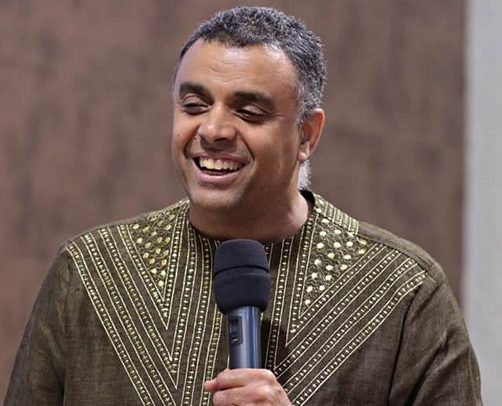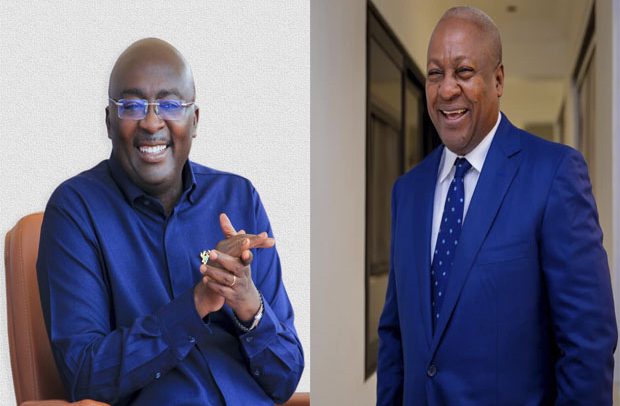
It is often said that, a successor without loyalty may inherit the seat, but not the mission. Likewise, a successor without competence may preserve the culture, but not the company.
Succession planning remains one of the most sensitive and strategic responsibilities in any organization. This is so because the exercise ensures continuity, protects culture and secures long-term growth.
Done poorly, it can destabilize leadership, erode trust and even compromise business survival. At the heart of this challenge lies a recurring dilemma, should succession favor competence or loyalty?
The underlying fact is that, what distinguishes high-performing organizations from underperforming ones is that successful entities understand the benefits of succession planning and thus engage in it on a continuous basis. In other words, their leadership perceives corporate succession planning as an investment and not an expense.
That said, Succession planning should not force organizations into a false choice between competence and loyalty. Instead, it should aim at cultivating leaders who bring both the skill to lead effectively and the commitment to steward the organization’s values.
This temptation and trap of choosing between the two extremes of overvaluing loyalty at the cost of skill, or overemphasizing competence while neglecting cultural fit should rather be focused on when designing processes that develop, identify, and reward both attributes. When organizations strike that balance, they ensure the “corporate seat” is not just kept warm, but occupied by leaders who can safeguard the present and build a stronger future.
Predominantly for most corporate entities today, regardless of size and location, a carefully crafted management succession plan would mean to deal with the dilemma of considering competence over loyalty or loyalty over competence and or the balance of it.
Understanding the main benefits of succession planning
Effective succession planning has proven to be beneficial to many organizations relative to risk reduction, secured leadership continuity and as a mechanism for maintaining competitive advantage. Typically, effective succession planning provide insights to help organizations:
Increase leadership availability
By this, corporate succession planning increases the availability of capable individuals who are prepared to assume leadership roles as they become available. This approach ensures that high-potential employees and key employees are developed and ready to fill vacant roles. Succession planning builds bench strength by fostering a pipeline of qualified candidates who can step into leadership positions as senior executives retire or move on.
Reduce the risk of leadership gaps
Succession planning significantly reduces the risk of leadership gaps by ensuring business continuity as leader’s transition. Organizations that maintain critical institutional knowledge and strengthen their leadership pipeline prioritize knowledge transfer from outgoing leaders to new ones. This proactive approach supports the continuity of critical roles.
Decrease recruitment costs
It is obvious to mention that succession planning minimizes the time and financial resources needed to recruit new leaders, as internal talent are always prepared for these positions instead. In situations where staffing needs change abruptly, having top talent already identified and trained within the organization is invaluable.
Create structured HR support
Succession planning is considered to offer human resources a structured framework for leadership selection. Emphasizing retention and securing buy-in at all levels helps HR avoid rushed hiring and strengthens the organization’s commitment to talent development. This approach also promotes a steady leadership pipeline and enhances workforce stability.
The Psychological Test of the Seat in Succession Planning?
Let me reiterate the point that, Succession planning is more than filling a vacancy but about preparing an individual for the psychological weight of the seat. Arguably, leadership roles demand not just skill and commitment, but the emotional resilience to handle scrutiny, pressure and isolation at the top.
Here, we acknowledge that organizations that succeed in succession planning often simulate the seat for potential successors. Oftentimes, the weight of the seat is characterized by underpinning expressions of stretch assignments which exposes candidates to high-stakes test judgment, adaptability and integrity.
Imagine one enters a room with labelled chairs numbering one to nine. Which seat would he likely sit on? The psychological “test of the seat” allows organizations to go beyond resumes and loyalty records, ensuring successors are both capable and committed when the weight of leadership rests on them.
Each “seat” represents a dimension of leadership responsibility. Here, candidates are tested across multiple seats, not just the CEO’s chair. For example, someone strong in the Operator Seat (execution) may not yet be ready for the Visionary Seat (strategy). The psychological “test of the seat” is often about exposing successors to these nine positions to see where they excel and forming the basis for selecting a new successor:
The Visionary Seat 1:
The visionary seat is often occupied by those who show leadership signs of founders or transformational leaders. They define purpose, long-term direction and have strategic intent. Besides, those that sit on the visionary seat are successors who can prove that, they have what it takes to protect and evolve the vision.
The Operator Seat 2:
Those that are likely to sit on the Operator seat normally are successors who ordinarily are wired to focus on execution and operations. They have an inbuilt appetite for ensuring systems, processes and day-to-day business run smoothly. They are a testament for tested discipline, detail orientated and reliable.
The Innovator Seat 3
To sit on innovator seat means, one is wired for initiating fresh ideas, embraces changes and drives innovation. To choose innovator seat, successors are challenged to show creativity balanced with practicality.
The Culture Carrier Seat 4
Here, successors are observed for loyalty, alignment and emotional intelligence and are also built to protect and transmit values, traditions and identity
The Financial Steward Seat 5
If the organization is looking for a successor who can manage resources responsibly including budgets, investments, risk and show financial acumen and integrity in stewardship, he or she is expected to sit on seat 5.
The Talent Builder Seat 6
This seat has the trait for successors who have the skills to develop other people, mentor future leaders, and build teams. Successors here are evaluated on empathy, coaching, and empowerment capabilities.
The Relationship Builder Seat 7
The ability to handle external networks example clients, partners, regulators and the community effectively, balance diplomacy with influence are the trait that must be watched out for from the successor who chooses seat 7.
The Crisis Navigator Seat 8
For successor who can be tested under pressure in times of uncertainty or threat yet demonstrate calm, resilience and decisive judgment normally may unconsciously choose seat 8.
The Legacy Seat 9
The legacy seat represents sustainability and long-term continuity. Successors are measured not only on immediate impact but on how they leave the organization stronger for the next generation.
Understanding the meaning of competence?
Many organizations have developed frameworks for technical and generic competencies, which relate to a broad range of desired skills and behaviors. The assessment process for generic frameworks can be a useful starting point in evaluating an individual’s past performance.
Competence is crucial for the success and growth of any organization. Without it, employees cannot contribute to innovation, problem-solving, and achieving organizational goals. With competent employees, organizations can instill confidence in stakeholders, such as clients, customers, and investors.
When the organization is majorly loyalty-driven and less focused on competence, growth will be stunted and the business will soon lose its competitive edge. Besides, leaders and promoters will never get to test their ideas because loyal employees will never challenge them.
However, competencies may be too limiting and mechanistic to assess skills such as leadership. They also relate to the past and present rather than the future. When using competencies to assess ‘potential’, organizations need to be very clear and consistent on what potential actually means. It should link to the organization’s values and its strategic goals.
Qualities of Competence
Competence is about the ability to perform effectively and lead with skill. Key qualities include technical expertise of strong knowledge of the industry, business functions and role-specific requirements, strategic thinking which shows one’s ability to anticipate trends, make informed decisions and align actions with long-term goals, decision-making ability about the confidence in making timely, sound, and ethical choices, even under pressure.
Besides, one’s competence is measured in his or her ability for adaptability, problem solving skills, communication skills, leadership presence and results oriented. That is to say that, the flexibility to adjust to change, embrace innovation, and lead in uncertain environments, capacity to analyze complex issues and deliver practical, effective solutions, clear, persuasive, and empathetic communication with diverse stakeholders, the ability to inspire confidence, motivate teams, and command respect, consistent track record of meeting goals and delivering value can be described as competences.
However, competence without loyalty carries its own risks. A highly capable leader who lacks alignment with organizational culture may introduce discord, pursue self-interest, or disengage when challenges mount. Competence alone does not guarantee stability or cultural continuity.
What happens when Competence is missing?
When loyalty outweighs competence, the organization falls into another trap of leadership weakness, stagnation, credibility loss and increased risk of failure. In essence, when loyal but unskilled leaders lead there is the lack of authority and confidence.
Besides, the focus will always shifts to preserving the past rather than preparing for the future. Much more, it is more likely to have mistakes committed under unqualified successors and the tendency for employees to lose respect for leaders who are chosen for loyalty consideration would abound.
The Case for Loyalty
It is said that, loyalty means nothing unless it has at its heart absolute principle of self-sacrifice. Loyal employees are often seen as the safest choice because they understand the culture, embody the organizational values, and have demonstrated long-term commitment. Loyalty here means minimized disruption and employees and stakeholders will feel more comfortable with a familiar face.
What happens where Loyalty is missing?
What then happens when loyalty is promoted over competence? Loyalty without competence can be dangerous. In fact, promoting someone primarily because they “stood by the company” risks putting an underprepared individual into a critical role. The cost of misplaced loyalty can be poor decision-making, operational weaknesses, and reputational harm.
When succession focuses solely on competence and disregards loyalty, organizations often experience culture erosion, short-term commitment, stakeholder distrust and strategic misalignment where disloyal leaders prioritize personal gain over organizational continuity.
Striking the Balance
The strongest succession plans recognize that competence and loyalty are not mutually exclusive. Instead, organizations define future competence clearly and identify not only today’s requirements but the evolving skills and mindset future leaders will need. Indeed, effective succession must ensure the balance between building a pipeline, not a single successor for continuity. This will help prepare multiple candidates, prevents dependency on one individual and encourage healthy competition.
Ultimately, striking a balance between loyalty and competence is ideal for organizations. While loyalty can create a strong foundation of trust and collaboration, competence ensures that work is done efficiently and effectively. Organizations should strive to cultivate a culture that values both and ensure leaders insist on upgrading the competence and invest in developing the loyal employees.
The Way Forward
Succession planning should not force organizations into a false choice between competence and loyalty. Instead, it should aim to cultivate leaders who bring both the skill to lead effectively and the commitment to steward the organization’s values. Therefore, understanding what to look for in competence and loyalty relative to succession planning is key to navigating the quagmire for effective succession planning.
Discovery….Thinking solutions, shaping visions.
Frank is the CEO and Lead Consultant for Discovery Leadership Consulting Ltd. He is an Executive Director and the Lead Coach in Leadership Development and best Business Management practices for Discovery Leadership Masterclass.
.Email: [email protected]
Tel: 233-0241824033/ 233-0501324604
The post Discovery Leadership Masterclass Series with Frank ANIM: Succession planning (2): Navigating the dilemma of competence and loyalty appeared first on The Business & Financial Times.
Read Full Story


























Facebook
Twitter
Pinterest
Instagram
Google+
YouTube
LinkedIn
RSS